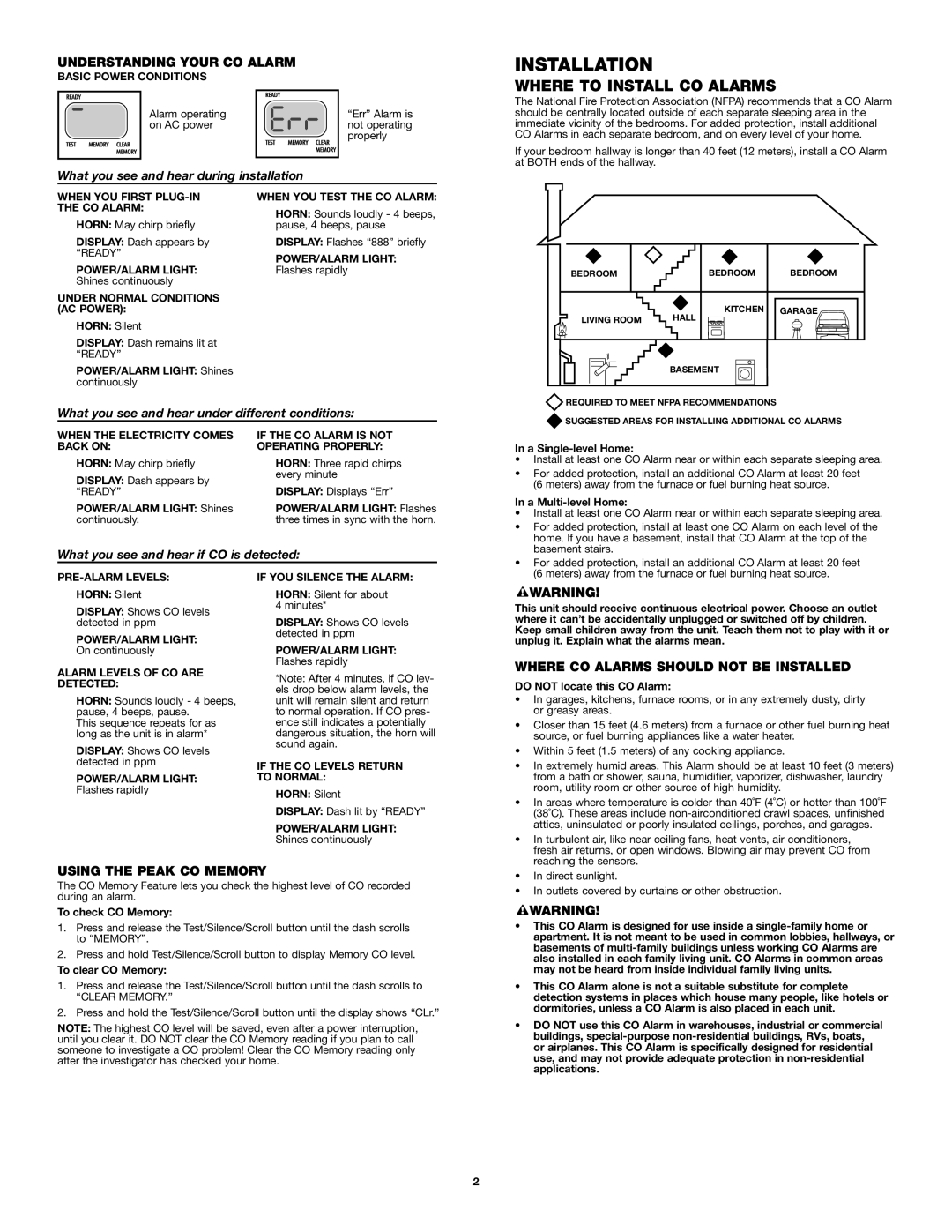FCD2DDNP specifications
The First Alert FCD2DDNP is an advanced carbon monoxide detector that exemplifies safety and convenience for modern households. Designed to provide peace of mind, this device integrates several key features and technologies that ensure reliable detection of dangerous carbon monoxide levels.One of the standout features of the FCD2DDNP is its dual-sensor technology, which enhances detection capabilities. This technology allows the device to recognize low-level carbon monoxide over extended periods, offering quicker alerts than traditional models. With this added sensitivity, the FCD2DDNP effectively minimizes the risk of CO poisoning, ensuring that families are alerted to potential dangers in a timely manner.
The FCD2DDNP is equipped with a digital display that provides real-time readings of CO levels. This screen not only shows current CO concentrations but also displays the peak levels detected since the last time the device was reset. This feature allows homeowners to monitor their environment continuously and stay informed about potential hazards.
Another significant characteristic of the First Alert FCD2DDNP is its user-friendly interface. The device comes with a simple setup process and has intuitive buttons for testing and silencing alarms. The voice alert feature is particularly notable; it speaks specific messages like "warning, carbon monoxide" and also indicates when the battery needs replacing. This ensures that users are not only alerted visually but also audibly, which can be especially critical during nighttime emergencies.
Powering the FCD2DDNP is a combination of a replaceable battery and an easy-to-handle design. The unit uses AA batteries, making replacements straightforward. Additionally, the unit’s sleek and compact design ensures it can fit seamlessly into various home aesthetics without becoming an eyesore.
Durability is another aspect of the FCD2DDNP's construction. It is designed to withstand common household conditions, ensuring longevity and consistent performance. The unit is also certified by relevant safety standards, validating its reliability and effectiveness in carbon monoxide detection.
In conclusion, the First Alert FCD2DDNP is a state-of-the-art carbon monoxide detector that prioritizes safety with its dual-sensor technology, digital display, and user-friendly features. It provides essential protection for families by effectively identifying CO levels and ensuring homeowners stay informed and prepared against the dangers of carbon monoxide. Investing in this device is a proactive step toward enhancing home safety.

